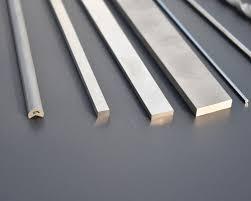In the world of manufacturing and machining, the choice of tooling materials plays a crucial role in determining the efficiency, precision, and overall performance of the process. One material that has gained traction in recent years is https://www.diatooling.com/cemented-carbide-strip.html, which offers a range of benefits over traditional tooling materials. In this article, we will conduct a comparative analysis of cemented carbide strip and traditional tooling materials to understand their respective strengths and weaknesses.
Introduction to Cemented Carbide Strip
Cemented carbide strip, also known as tungsten carbide strip, is a composite material made up of tungsten carbide particles bonded together by a metal binder, usually cobalt. This combination of materials results in a high-strength, wear-resistant material that is ideal for cutting, drilling, and shaping applications. Cemented carbide strip is available in various grades and compositions, allowing for customization based on specific machining requirements.

Advantages of Cemented Carbide Strip
High Hardness and Wear Resistance: One of the key advantages of cemented carbide strip is its exceptional hardness, which is second only to diamond. This hardness allows for high-speed machining operations without compromising on tool life. Additionally, the wear resistance of cemented carbide strip ensures that the cutting edges remain sharp for longer periods, reducing the frequency of tool changes.
Superior Toughness: Despite its high hardness, cemented carbide strip exhibits excellent toughness, making it less prone to chipping and breakage during machining operations. This toughness is essential for maintaining dimensional accuracy and surface finish in precision machining applications.
Heat Resistance: Cemented carbide strip has a high melting point and thermal conductivity, allowing it to withstand high temperatures generated during machining. This heat resistance prevents deformation and thermal cracking, ensuring consistent performance over extended periods.
Improved Productivity: The combination of high hardness, wear resistance, toughness, and heat resistance results in improved productivity and cost-effectiveness. With cemented carbide strip, manufacturers can achieve higher cutting speeds, feeds, and depths of cut, leading to increased material removal rates and reduced cycle times.
Versatility: Cemented carbide strip can be used in a wide range of machining applications, including turning, milling, drilling, and threading. Its versatility makes it a preferred choice for industries such as automotive, aerospace, and die and mold making.

Comparison with Traditional Tooling Materials
High-Speed Steel (HSS): High-speed steel is a traditional tooling material known for its toughness and versatility. While HSS is suitable for a wide range of applications, it falls short in terms of hardness and wear resistance compared to cemented carbide strip. As a result, HSS tools may need to be replaced more frequently, leading to increased downtime and tooling costs.
Carbide Inserts: Carbide inserts are another popular tooling material that offers good wear resistance and cutting performance. However, cemented carbide strip surpasses carbide inserts in terms of toughness and heat resistance, making it more suitable for demanding machining operations.
Tool Steel: Tool steel is commonly used in applications that require high impact resistance and toughness. While tool steel can be hardened to achieve high hardness, it lacks the wear resistance and heat resistance of cemented carbide strip. As a result, tool steel tools may wear out quickly, especially when machining abrasive materials.
Ceramics: Ceramics are known for their high hardness and wear resistance, making them ideal for cutting hard and brittle materials. However, ceramics are prone to chipping and breakage under high impact loads, limiting their applicability in heavy-duty machining operations. Cemented carbide strip offers a more balanced combination of hardness, toughness, and wear resistance, making it a more versatile choice for a wider range of materials.

Conclusion
In conclusion, the comparative analysis between cemented carbide strip and traditional tooling materials highlights the superior performance and cost-effectiveness of cemented carbide strip in machining applications. With its high hardness, wear resistance, toughness, and heat resistance, cemented carbide strip offers a winning combination of properties that enable manufacturers to achieve higher productivity, precision, and tool life. While traditional tooling materials such as HSS, carbide inserts, tool steel, and ceramics have their respective strengths, cemented carbide strip stands out as a versatile and reliable choice for modern machining needs.
Shanghai Diatooling is a highly professional and experienced carbide performer and provider. With the superior technological background, outstanding R&D capability, and the concept of insisting on strict quality, we can offer excellent service and large capacity manufacture. And with our vast experience in tungsten carbide, every customer is sure to get the right solution for their cutting tools.
Welcome to contact us if you need to know more about cemented carbide strip details or order wholesale.
